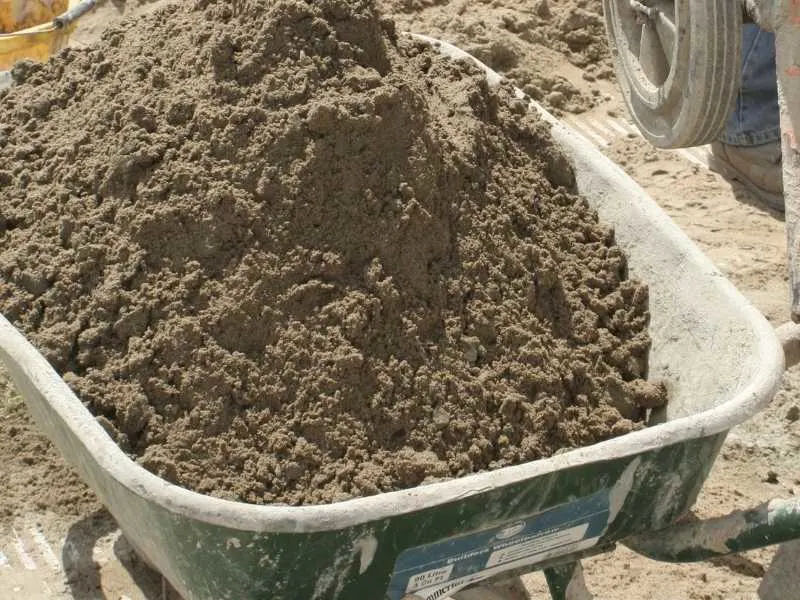Can I Use Builders Sand for Gardening?
Most plants, especially garden plants, require well-drained soils to thrive. And luckily, you can do something to improve the soil’s drainage and save your plants from oxygen deprivation.
You’ll only need to make the soil gravelly, sandy, or stony to make the water drain quickly and improve air circulation.
Most gardening experts recommend you use horticultural sand to improve drainage in your garden. It contains specially mixed different-sized gritty granite, quartz, and sandstone particles.
Technically, horticultural sand is the best for improving soil drainage but can be unavailable in some regions, very pricey, or in smaller quantities than you need.
Can you then use the builders sand for gardening instead? Follow along to find the answer below.

Can You Use Builders’ Sand for Gardening?
Yes, you can use builders’ sand for gardening. The end goal of incorporating sand into your garden is to create spaces within soil particles, to improve water movement and aeration. And one effective material is the builder’s sand.
Apart from availability worldwide, builder’s sand is cheaper than horticultural sand, and you can order whatever quantity you want.
Choosing the Best Builders’ Sand
While builders’ sand can significantly improve the drainage of your soil, the size of the grains determines how effective it will be.
For instance, if you confuse play sand or sandbox (made of fine, round grains) for builder’s sand, you’ll be turning your whole garden into cement—worsening the drainage.
Ensure you get the coarse builders’ sand, mainly in the masonry department of a masonry and landscaping materials store. The grains should be larger and coarser than those of play sand for substantial drainage improvement to occur.
Also, ensure you have a fine dust mask to keep the silica away from your lungs when mixing builders’ sand in your garden.
When to Use Sand for Gardening
Most plants require well-drained soils in various stages of their growth. While such soils would be a mixture of soil and sand, some plant growth stages do well with one or the other, or well-mixed small quantities of each. Below are suggestions on when and why to use sand for gardening:
Seeds and Cuttings Rooting
Seeds and cuttings rooting does exceptionally well in a soilless mixture of sand and compost (or peat). The loose structure has excellent drainage and air circulation that accelerates rooting.
Potting Mix
Outdoor plants benefit significantly from the natural drainage of most soil types, which is non-existent in potted plants. Garden soil compacts easily and become brick-like when used alone in container gardening.
To improve the water drainage and maintain good air circulation, add some sand to your potting mix. Experts recommend you add one part of sand to two parts of your potting mixture for most plants and a 50-50 combination for cactus and other succulents.
Loosening Heavy Soil
Heavy soils like clay have inferior drainage, and in some instances, almost zero porosity. Some plant roots aren’t capable of penetrating such heavy soils and hence can’t survive to maturity.
If your garden has heavy clay soil only, then you’ll need a considerable amount of sand. Many experts recommend you get sand into the top nine inches of your soil for best results in improving drainage. Spread several inches of sand on the garden soil, and then dig to mix them.
Improving Lawn Health
Rainy climates spell doom for lawn grass growing in poorly drained soils. The waterlogging eventually leads to the hardening of the soil and can kill the grass quickly.
To mitigate the problem, punch some holes into the lawn using an aerator or pitchfork, and fill them with sand.
Alternatives to Builders’ Sand
In the unlikely event, you can’t find good builders sand for your garden, there are alternatives other than horticultural sand for improving drainage.
Below are some options:
Use Perlite or Vermiculite
Perlite and vermiculite are rock-based mineral particles mainly used in making potting soil. They will improve the drainage of the seed starting mix significantly and reduce the possibility of compactness.
Also, you can add some finished compost or vermicompost to introduce more nutrients into the mixture.
Crushed Gravel
This is a cheap alternative to builder’s sand, though decorative stone chippings or pea shingles will also suffice. Avoid sea gravel as they are too salty.
Tree Barks
Though not as long lasting as builder’s sand, large pieces of undecomposed barks will do the trick. You’ll have to add some more with time as the old ones decompose.
Also, partially decomposed compost and other organic materials can be added to improve drainage and nutrients in the soil.
Can I Use Builders’ Sand for Gardening? Final Thoughts
Your plants should not die from drowning in poorly drained soil. And improving the drainage of your soil should not be a break-the-bank situation either. Builders’ sand will keep your wallet intact while doing precisely what the pricier horticultural sand would do to your garden – improve drainage.
However, ensure you get suitable grain sizes and wear protective gear to keep off the silica as you apply the builder’s sand to your garden. Grab some sand for your garden, and you’ll be a happy gardener as your plant will reward you handsomely.



